| |
|
The Water World: Network Of Canals
& Lagoons |
|
A cruise down the backwater country |
|
| |
| 28th
October
Our trip was coming to an end. Only the backwater cruise was
left. We had planned to cruise down the backwater from Kottayam
to Alleppy. We had to catch the train to Chennai at about 1430
hours.
We woke up early, had simple breakfast and headed for the
ferry ghat. We booked a small double-decker boat. She
looked young & beautiful and was fast. She was exactly
the kind of boat we were looking for! The lower deck was simple
and the rooftop was accessible. Chairs were placed there and we
settled down on the roof. Anto's rickety music system was
switched on. The cruise was going to be exciting indeed! |
| |
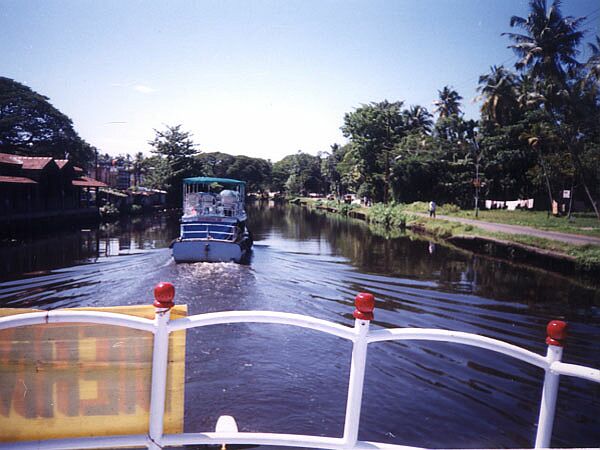 |
The cruise
started at around 0830 hours. The morning sun was
bright. The canal was very calm. Both banks were dotted
with small houses, presumably of villagers.
We were told by our guide and the captain that in
this part of the civilization, these canals connect the
remotest of all the villages. Boats and ferries are the
most important mode of transportation. Since these
canals form the big backwater, they are also precious
sources of fishing. Infact, from evening 1900 hours to
morning 0700 hours, the canals become prime fishing zone
and they are 'closed' to avoid any traffic!
|
|
| |
| There
were numerous bridges over these canals. They were wooden and
looked rickety. They provide two very important services.
Firstly, they allow people to go from one side of the canal to
the other. Secondly, they act as traffic cop to the ferries and
boats! |
| |
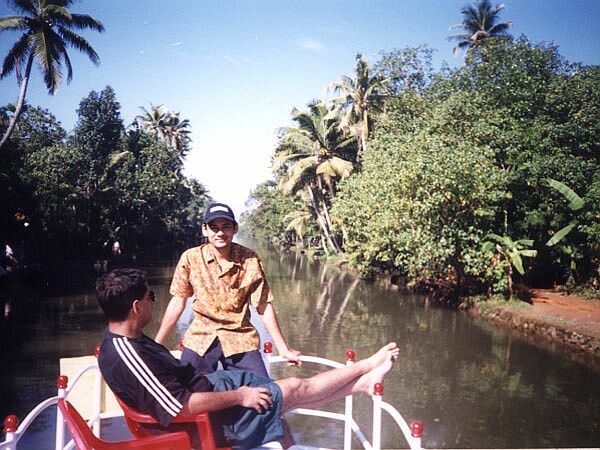 |
We were slowly
going from smaller canals to the wider ones. There were
so many of them; it looked like a water labyrinth. The
banks were invariably dotted with coconut trees. I
guess, half of India's coconut tree population reside in
this region. |
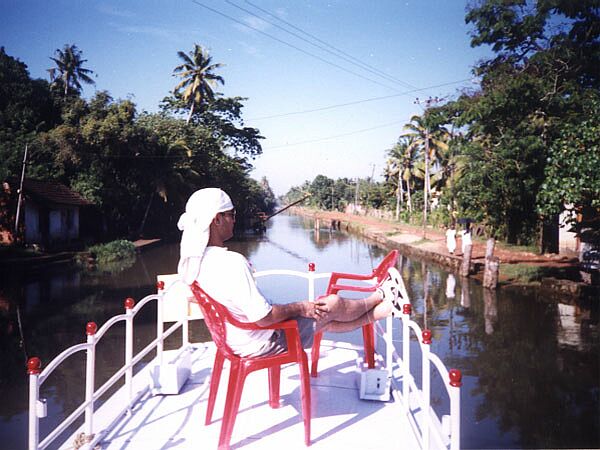 |
|
| |
| We were
told that during heavy monsoon, the whole place become
inundated. Since the entire region is almost at sea level, there
is no way, one can stop water from seeping into the water-locked
land. Once the monsoon is over, the villagers start coming back
and cultivate rice on their land. The land in this region is
mostly used for paddy cultivation. |
| |
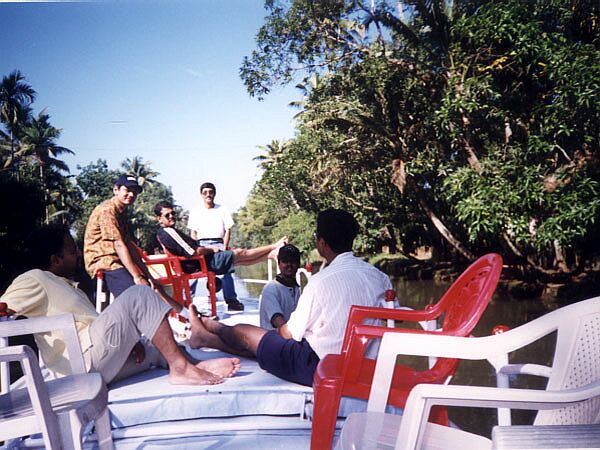 |
As we were
heading more towards the bigger canals/ rivers/ lagoons
(it was difficult to say which word is most
appropriate!), the vegetation became sparse. Only
coconut trees and sometimes paddy fields.
It was water all around |
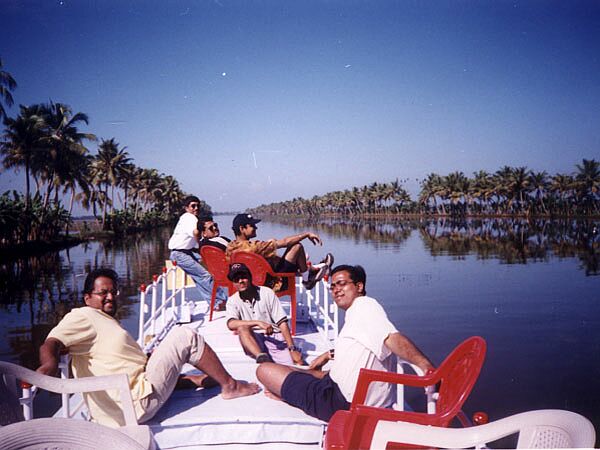 |
|
| |